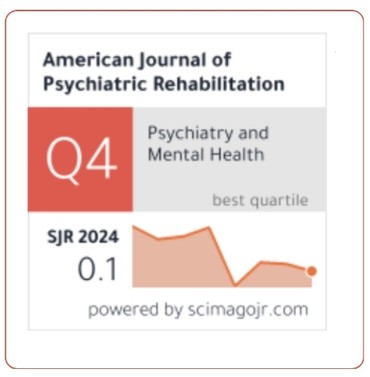Methicillin Resistant Staphylococcus Aureus (MRSA) – A Study On Its Prevalence And Antimicrobial Susceptibility Patterns In A Tertiary Teaching Hospital Of Rural West Bengal
DOI:
https://doi.org/10.69980/ajpr.v28i5.434Keywords:
MRSA, VITEK 2 COMPACT, CEFOXITINAbstract
INTRODUCTION- Methicillin resistant Staphylococcus aureus (MRSA) is endemic in India with more than 50% of S. aureus infections being caused by methicillin-resistant strains of Staphylococcus aureus which poses a high therapeutic challenge. Healthcare workers are the main source of transmission of MRSA among hospital admitted patients. MRSA is resistant to several classes of antibiotics including some recent resistance also being observed towards glycopeptides as well as aminoglycosides making the treatment of infections and their eradication very difficult.
AIMS- To identify MRSA strains from different clinical samples of hospital patients and to study their clinic-demographic profile and antibiotic susceptibility pattern.
MATERIALS AND METHODS- This study was conducted at the Department of Microbiology of Tamralipto Government Medical College and Hospital from May 2024 to April 2025 on 1385 clinical samples received from various departments and were subjected to automated ID and AST by VITEK2 compact (Biomerieux) and Methicillin resistance was detected by using Cefoxitin susceptibility as a surrogate marker by VITEK2 compact method.
RESULTS- Out of 1385 clinical samples received at our laboratory, 488 MRSA samples were isolated (35.23%). MRSA was highest in pus sample (36.07%) and lowest in respiratory samples. Most of the MRSA isolates were from Medicine department (37.91%) followed by ICU (19.06%) least from chest medicine department (3.07%). Among all the 488 MRSA patients, highest number was observed in the younger age group 21-40 years and least patients were in the elderly age >60 years. MRSA isolates showed maximum sensitivity towards Glycopeptides and Linezolid and least sensitivity towards Norfloxacin and Macrolides.
CONCLUSION- Regular surveillance of antimicrobial susceptibility pattern of MRSA infections for the formulation of antibiotic policies and proper infection control practices will help to reduce the burden of MRSA infections in hospitals.
References
1. Dulon M, Haamann F, Peters C, Schablon A, Nienhaus A. MRSA prevalence in European healthcare settings: a review. BMC infectious diseases. 2011 Dec;11:1-3.
2. Arora S, Devi P, Arora U, Devi B. Prevalence of methicillin-resistant Staphylococcus aureus (MRSA) in a tertiary care hospital in Northern India. Journal of laboratory physicians. 2010 Jul;2(02):078-81.
3. Khan RA, Rahman AU, Ahmad A, Jaseem M, Jabbar A, Khan SA, Iqbal A, Ahmad N, Wadood A, Rahman TU. Prevalence and antibiotic susceptibility profile of methicillin-resistant Staphylococcus aureus (MRSA) isolated from different clinical samples in district Peshawar. J Appl Environ Biol Sci. 2014 Nov;4(8S):40-6.
4. Witte W, Kresken M, Braulke C, Cuny C: Increasing incidence and widespread dissemination of methicillin-resistant Staphylococcus aureus (MRSA) in hospitals in central Europe, with special reference to German hospitals. Clin Microbiol Infect 1997, 3:414-422
5. N.Rolinson, G., "Celbenin" - resistant Staphylococci. British Medical Journal, 1961.1(5219): p. 125-126.
6. Erica S. Pan, B.A.D., Heather A. Carleton, Edwin D. Charlebois, George F. Sensabaugh, Barbara L. Haller and Francoise Perdreau Remington, Increasing prevalence of methicillin-resistant Staphylococcus aureus infection in California jails. Clinical Infectious Diseases, 2003. 37(10): p. 1384-1388.
7. Drago, L., et al., In vitro evaluation of antibiotics' combinations for empirical therapy of suspected methicillin resistant Staphylococcus aureus severe respiratory infections. BMC Infectious Diseases, 2007. 7(111): p. 2334-7.
8. Joshi S, Ray P, Manchanda V, Bajaj J, Chitnis DS, Gautam V, Goswami P, Gupta V, Harish BN, Kagal A, Kapil A. Methicillin resistant Staphylococcus aureus (MRSA) in India: prevalence & susceptibility pattern. Indian Journal of Medical Research. 2013 Feb 1;137(2):363-9.
9. Muto CA: Methicillin-resistant Staphylococcus aureus control: we didn’t start the fire, but it’s time to put it out. Infect Control Hosp Epidemiol 2006, 27:111-115.
10. Anupurba S, Sen MR, Nath G, Sharma BM, Gulati AK, Mohapatra TM. Prevalence of methicillin resistant staphylococcus aureus in a tertiary referral hospital in eastern Uttar Pradesh. Indian J Med Microbiol 2003;21: 49-51.
11. Dar JA, Thoker MA, Khan JA, Ali A, Khan MA, Rizwan M, Bhat KH, Dar MJ, Ahmed N, Ahmad S. Molecular epidemiology of clinical and carrier strains of methicillin resistant Staphylococcus aureus (MRSA) in the hospital settings of north India. Annals of clinical Microbiology and antimicrobials. 2006 Dec;5:1-5.
12. Schaefler S, Jones D, Perry W: Emergence of gentamicin and methicillin- resistant Staphylococcus aureus in New York City hospitals. J Clin Microbiol. 1981, 13: 754-759.
13. Tiwari HK, Sapkota D, Sen MR. High prevalence of multidrug-resistant MRSA in a tertiary care hospital of northern India. Infection and drug resistance. 2008 Nov 30:57-61.
14. Mohanty S, Kapil A, Dhawan B, Das BK. Bacteriological and antimicrobial susceptibility profile of soft tissue infections from Northern India.
15. Rajaduraipandi K, Mani KR, Panneerselvam K, Mani M, Bhaskar M, Manikandan P. Prevalence and antimicrobial susceptibility pattern of methicillin resistant Staphylococcus aureus: A multicentre study. Indian journal of medical microbiology. 2006 Jan 1;24(1):34-8.
16. Mulla S, Patel M, Shah L, Vaghela G. Study of antibiotic sensitivity pattern of methicillin-resistant Staphylococcus aureus. Indian J Crit Care Med. 2007 Apr 1;11(2):99-101.
17. Pandya N, Chaudhary A, Mehta S, Parmar R. Characterization of methicillin resistant Staphylococcus aureus from various clinical samples at tertiary care hospital of rural Gujarat. J Res Med Dent Sci. 2014 Jul;2:49-53.
18. Pai V, Rao VI, Rao SP. Prevalence and antimicrobial susceptibility pattern of methicillin-resistant Staphylococcus aureus [MRSA] isolates at a tertiary care hospital in Mangalore, South India. Journal of laboratory physicians. 2010 Jul;2(02):082-4.
19. Manjula M, Priya D, Varsha G. Bacterial isolates from burn wound infections and their antibiograms: A eight-year study. Indian Journal of plastic surgery. 2007 Jan;40(01):91-3.
20. Tahnkiwale SS, Roy S, Jalgaonkar SV. Methicillin resistance among isolates of Staphylococcus aureus: antibiotic sensitivity pattern & phage typing. Indian journal of medical sciences. 2002 Jul 1;56(7):330-4.
Downloads
Published
Issue
Section
License
Copyright (c) 2025 American Journal of Psychiatric Rehabilitation

This work is licensed under a Creative Commons Attribution 4.0 International License.
This is an Open Access article distributed under the terms of the Creative Commons Attribution 4.0 International License permitting all use, distribution, and reproduction in any medium, provided the work is properly cited.









